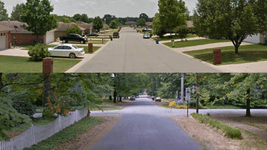
The Key to Slowing Traffic is Street Design, Not Speed Limits

Street design dictates how fast people drive and how safe they feel. A wide, straight road invites speeding, regardless of the posted limit. Narrower lanes, tighter corners, and visual cues like trees and streetlights naturally slow traffic.
What Does It Mean When a Prank 60 Mph Sign Goes Unnoticed?
“Most people believe the alternative to cars is better transit—in truth, it’s better neighborhoods.” 71
Paul Hawken • Natural Capitalism
